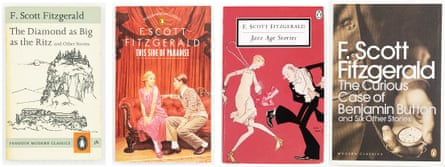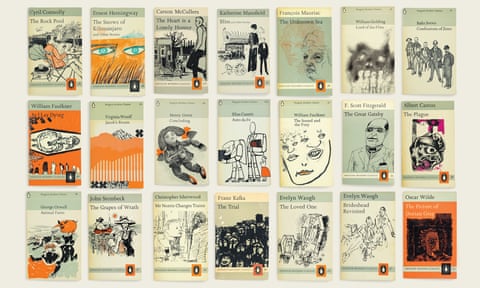If a publisher declares a book to be a classic, as Penguin has been doing for the past 75 years with its Classics series, and since 1961 with the Modern Classics offshoot, it raises a number of potentially knotty questions. What makes a book a classic? Who gets to decide? And will today’s classic still be a classic in 10 years’ time, let alone 50 or 100?
“It’s a really slippery term,” admits Henry Eliot, who has written a book on the former series and is about to put out a volume on the latter, entitled The Penguin Modern Classics Book. “There are various ways that people have made sense of it,” he says. “The definition I find the most helpful is from Ezra Pound. He said that a classic is classic not because of any structural rules or criteria that it meets, but because of a certain internal and irrepressible freshness. And that rings true to me.”
As for who decides, Eliot believes that rather than fencing off the landscape of literature by creating a stable of classics, Penguin editors are in fact opening it up and encouraging readers to broaden their horizons. There are serious imbalances in both series – four-fifths of the authors in the Modern Classics stable are men, and nine in 10 are white – but Eliot insists that things are changing. “The task of a classics publisher is to identify these imbalances and redress them,” he writes.
Another question that appears less vexed, but which has likely caused sleepless nights for many Penguin designers over the years, has to do with external rather than internal freshness: how do you create a cover fit for a classic?
The answer, according to Eliot, is: not easily. “From the beginning, built into the DNA of Penguin, has been this idea that the books need to be beautifully designed,” he says. “If anything has characterised the Penguin design ethos, it’s a kind of elegant simplicity – there’s something deceptively simple about a Penguin cover. It takes a huge amount of work to put them together.”
Eliot’s new book opens with a section on how the cover design has evolved, and you can see the carefully considered but striking changes that were introduced by successive art directors over the decades (the Modern Classics series turned 60 this year). Dominant colours (orange, dove grey, eau-de-nil) drop out, only to creep back into later iterations. Typefaces get axed, after much agonising, to be replaced by more modern-looking counterparts. Grid layouts are imposed – many 1960s covers were designed according to the so-called Marber grid, which sectioned off the publisher’s logo, the title, the author’s name and the image – only to drift after a few years or get overhauled completely.
Some of Eliot’s favourite covers date back to the early 1960s, when the Modern Classics series was still finding its feet. From the outset, Penguin had relied on mostly typographical designs, but by the late 50s illustrations were becoming more common. As younger designers and illustrators were brought in, and given much greater graphic freedom, Penguin covers became increasingly bold and strange, to match the writing they advertised.
The colours of these covers were relatively restrained, says Eliot, “but within that quite muted, subtle framework, the art directors were commissioning these sometimes really shocking and startling original images from the illustrators of the day”. These included David Gentleman, Michael Ayrton and a young Quentin Blake, who was tasked with illustrating the novels of Evelyn Waugh.

Blake, whose irreverent, scratchy style was already in place, captures Waugh’s mordant wit and keen sense of life’s absurdities. More unsettling is the work of Hungarian-born French cartoonist André Francois. Eliot singles out his cover of William Faulkner’s The Sound and the Fury, “where each eye of the face is made up of a mouth with another set of eyes. It’s just such a scary, striking image. It reminds me of Escher or one of Borges’s short stories – there’s something queasy and vertiginous about it.”
The artists were toying with the form in various ways. Eliot points out the male figure in the foreground of the cover for Carson McCullers’s The Heart Is a Lonely Hunter – one of the first books published in the series – who appears to be leaning against the side of the book, as if propped up by the designer’s precisely formulated margins.
This championing of original illustration lasted only a couple of years, though it gave rise to more than 100 covers. After 1963, says Eliot, the designers “began to increasingly use existing artworks – the idea being that the cover artwork was roughly contemporaneous with the text, so you get an instant visual link to what you’re reading”. Thus a cover of Virginia Woolf’s To The Lighthouse features a work by fellow Bloomsbury Group member Duncan Grant.
The covers continued to be eye-catching and beautifully executed, right up to the present, but for this brief period in the early 1960s Penguin let its hair down and showed its wilder, weirder side. “The best covers find a way to make new titles intriguing and familiar authors appear fresh and irresistible,” says Eliot. By that measure, these early Modern Classic covers succeeded with madcap exuberance.
